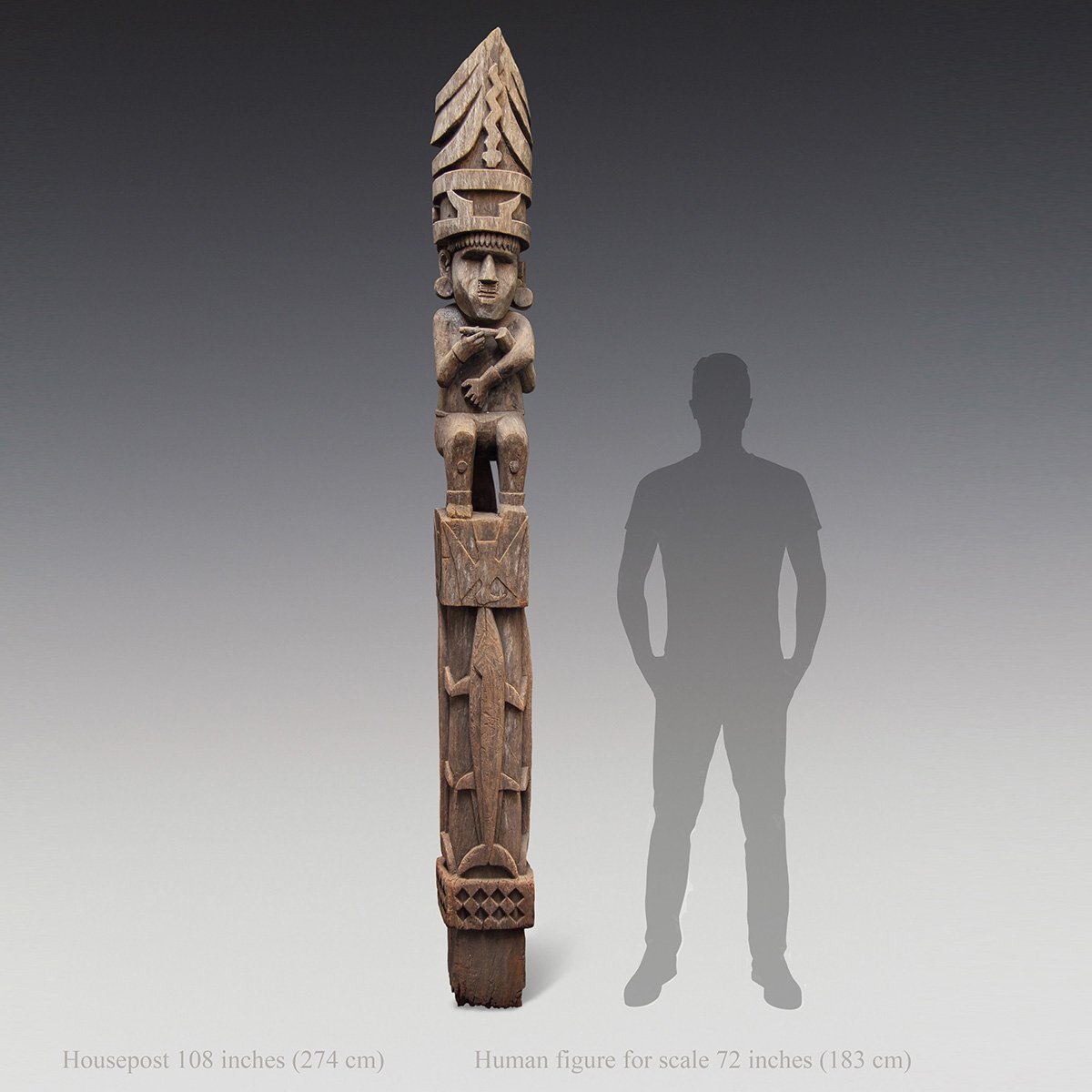 Image 1 of 9
Image 1 of 9

 Image 2 of 9
Image 2 of 9

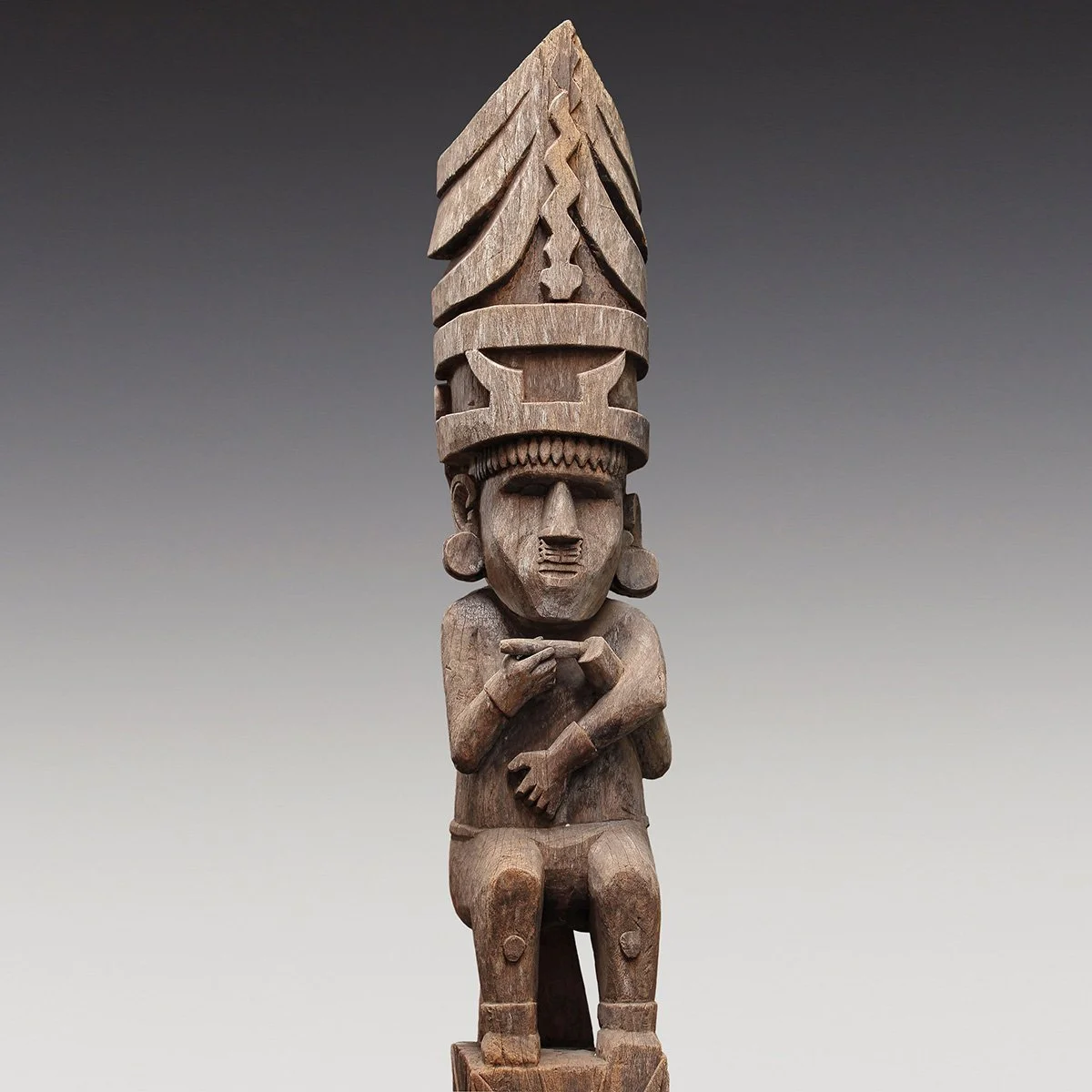 Image 3 of 9
Image 3 of 9

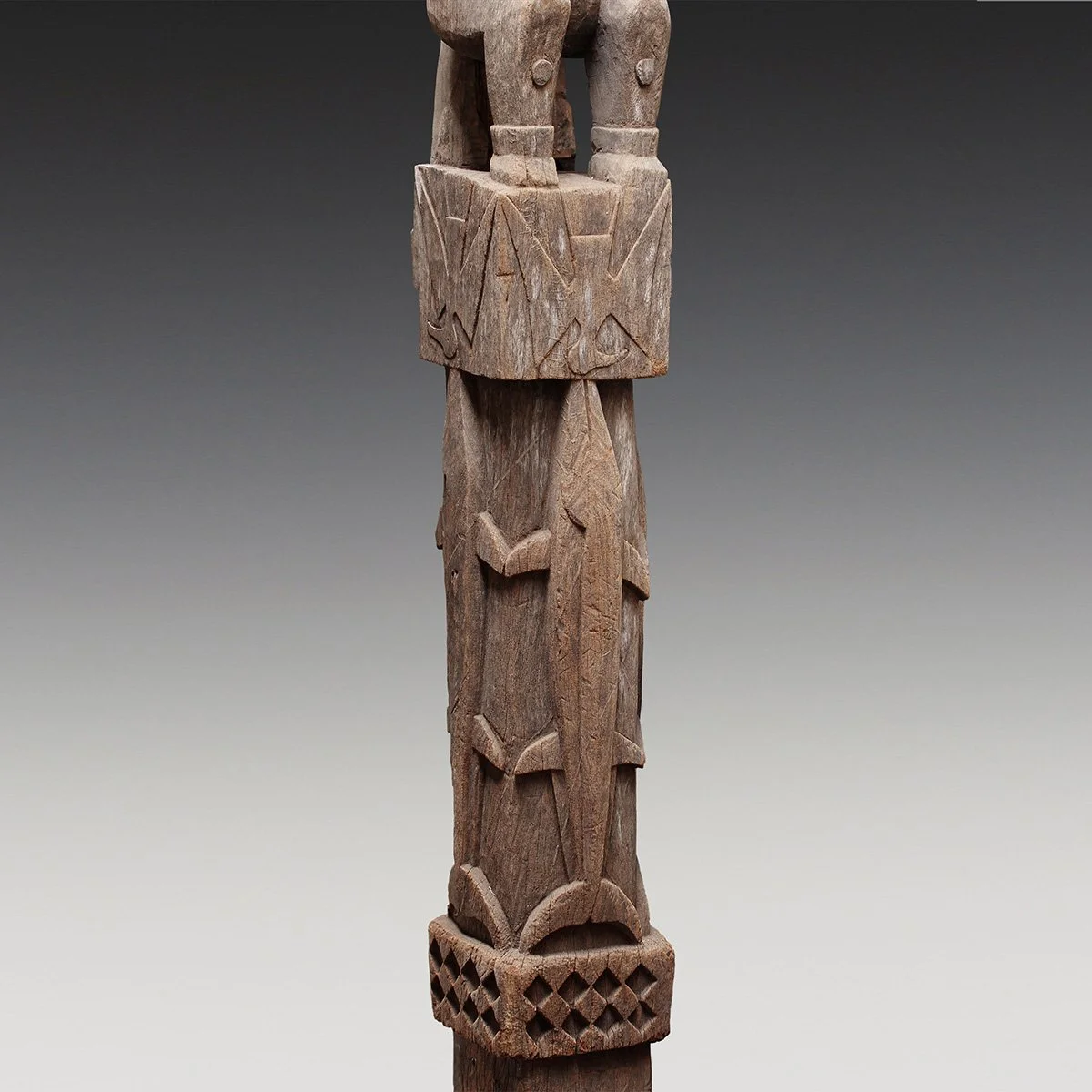 Image 4 of 9
Image 4 of 9

 Image 5 of 9
Image 5 of 9

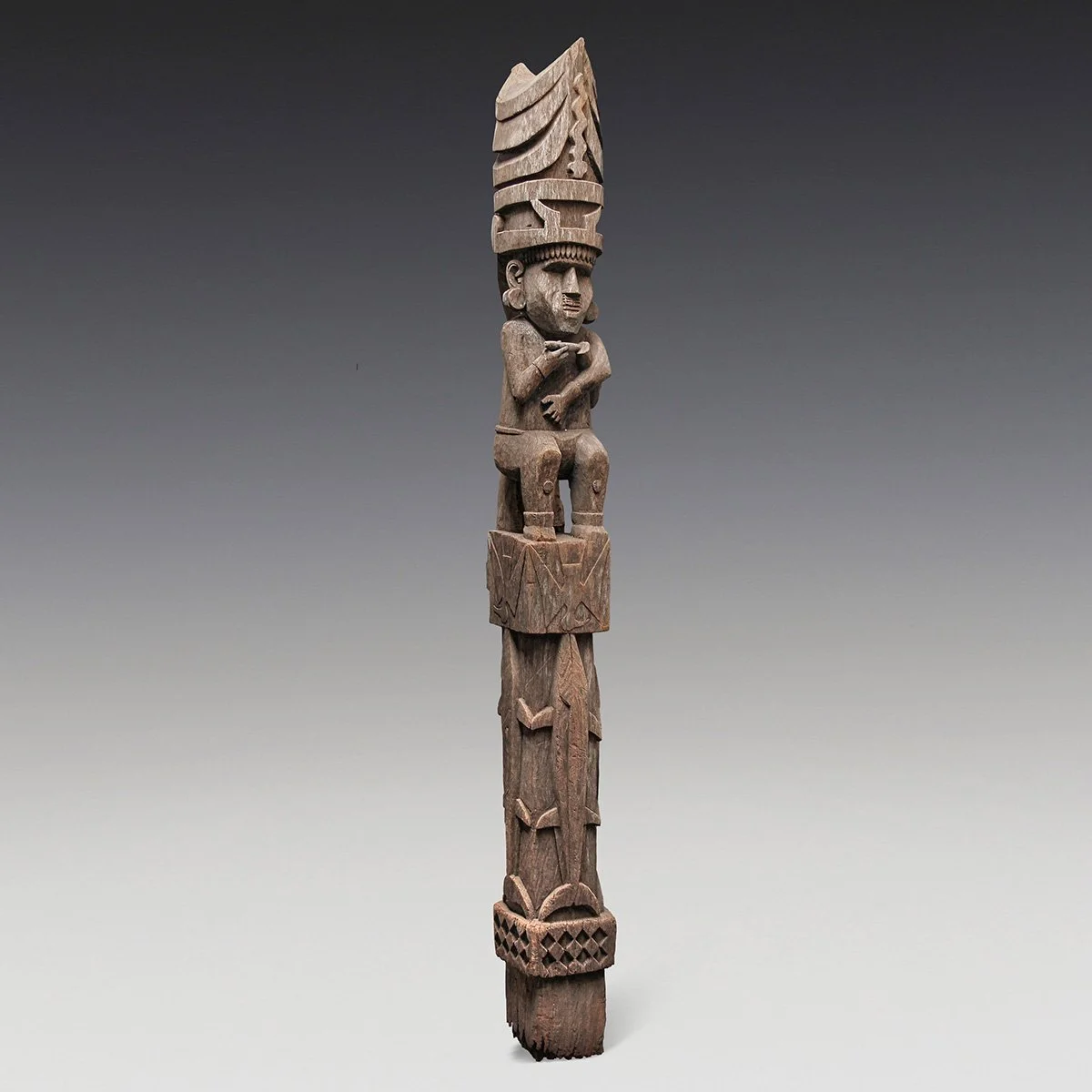 Image 6 of 9
Image 6 of 9

 Image 7 of 9
Image 7 of 9

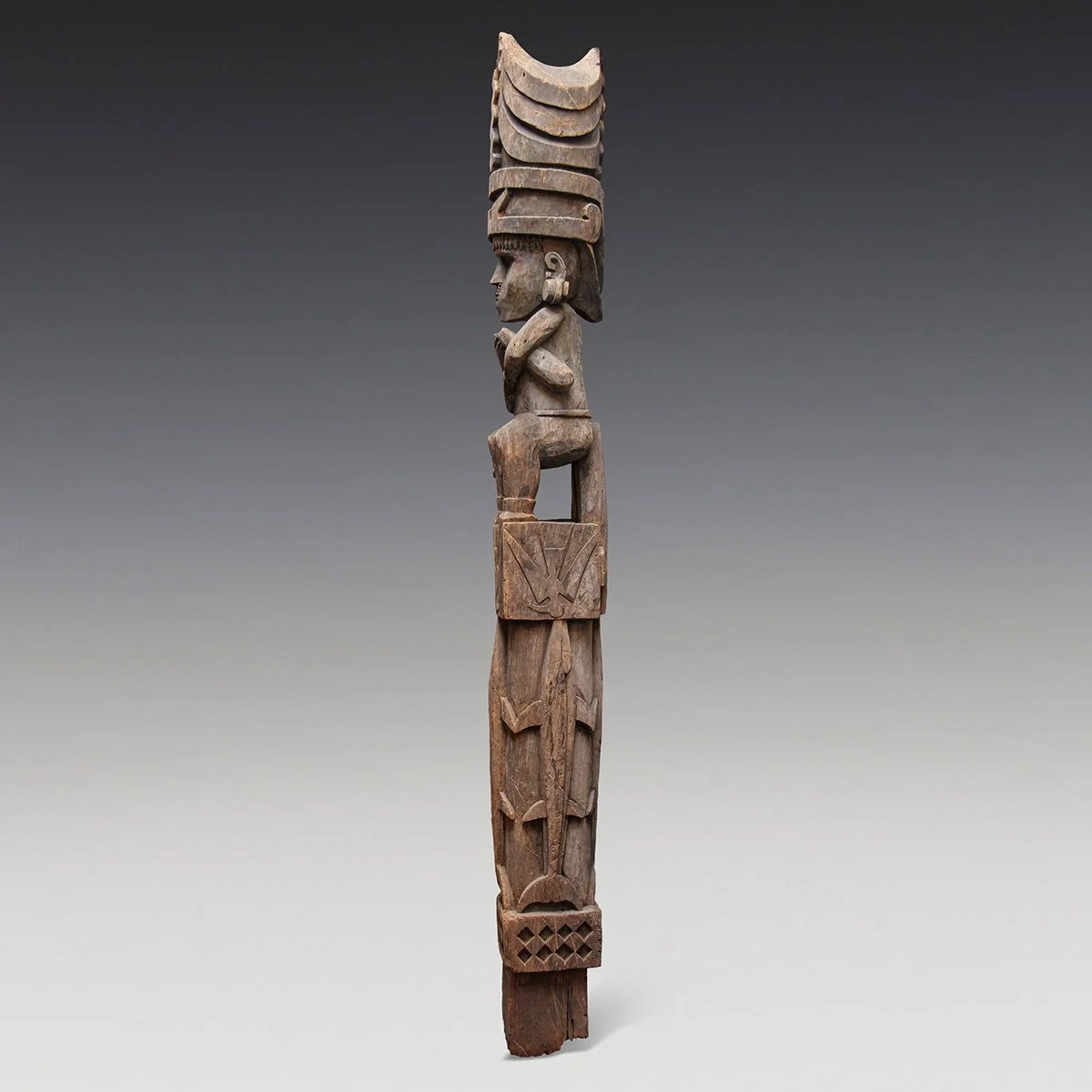 Image 8 of 9
Image 8 of 9

 Image 9 of 9
Image 9 of 9










Important Solomon Islands Figurative House Post
San Cristobal Island, Makira Province, Solomon Islands
Height: 108 inches (274 cm)
19th century.
Provenance: Peter Stratford, New Zealand / Texas private collection
Art Loss Register certificate provided: # S00254483
Originating from the Eastern Solomon Islands, this powerfully carved figurative house post once served as a central support post for a community men’s house, or Aofa. This was a grand structure designed to house the large sacred canoes that were used to hunt at sea for bonito (tuna). The bonito hunt was an important stage in a young man’s life, whereby he would gain important ancestral knowledge through the rites and rituals associated with the hunt. With the introduction of Christianity in the early 20th century, the bonito hunt and its associated rites had largely disappeared from the Eastern Solomons within a generation, and subsequently many of the grand bonito houses were left in disrepair and were abandoned to the elements. Fortunately, the house post presented here supported an old community men’s house that continued to be revered and well maintained by the tribal community through to the mid-20th century, prior to being collected.
Carved from dense ironwood, the house post portrays a seated male ancestral figure adorned with the chiefly regalia worn during the ceremonies associated with the bonito hunt. The figure wears a carved headband of small cowrie shells, and above is carved a frigate bird crown, which in life would have been constructed from a delicate weaving of pandanus fiber. Above the crown is carved a series of nested crescent shaped motifs representing bonito tails, that serve to cradle the wooden cross beam used to support the palm thatched roof of the men’s house. The pair of serpentine motifs adorning this upper portion of the post depict a mythological sea snake that was central to the stories and customs of the bonito hunt. The ears of the figure are depicted with large circular ear spools that would have been rendered out of a polished tridacna shell disc, and a complex nose ornament is depicted suspended from the septum. The figure is portrayed grasping a lime container gourd and accompanying lime stick, used by the Solomon Islanders for the preparation of betel nut. A pair of shell leg bands are indicated, and the figure is supported by the head of a shark. His feet rest upon a four-sided base finely carved with a diving frigate bird depicted on each panel; for frigate birds were believed to be ancestral messengers, guiding men to the large schools of bonito. Finely carved in deep relief, four large bonito are depicted beneath the frigate bird panel and serve to visually support the figure above. The bottom of the carving terminates in a decorative array of deeply carved diamond shaped motifs. The dense ironwood has faded and weathered to a gray patina, from exposure to the coastal salt air over many decades. A custom metal base is included.
San Cristobal Island, Makira Province, Solomon Islands
Height: 108 inches (274 cm)
19th century.
Provenance: Peter Stratford, New Zealand / Texas private collection
Art Loss Register certificate provided: # S00254483
Originating from the Eastern Solomon Islands, this powerfully carved figurative house post once served as a central support post for a community men’s house, or Aofa. This was a grand structure designed to house the large sacred canoes that were used to hunt at sea for bonito (tuna). The bonito hunt was an important stage in a young man’s life, whereby he would gain important ancestral knowledge through the rites and rituals associated with the hunt. With the introduction of Christianity in the early 20th century, the bonito hunt and its associated rites had largely disappeared from the Eastern Solomons within a generation, and subsequently many of the grand bonito houses were left in disrepair and were abandoned to the elements. Fortunately, the house post presented here supported an old community men’s house that continued to be revered and well maintained by the tribal community through to the mid-20th century, prior to being collected.
Carved from dense ironwood, the house post portrays a seated male ancestral figure adorned with the chiefly regalia worn during the ceremonies associated with the bonito hunt. The figure wears a carved headband of small cowrie shells, and above is carved a frigate bird crown, which in life would have been constructed from a delicate weaving of pandanus fiber. Above the crown is carved a series of nested crescent shaped motifs representing bonito tails, that serve to cradle the wooden cross beam used to support the palm thatched roof of the men’s house. The pair of serpentine motifs adorning this upper portion of the post depict a mythological sea snake that was central to the stories and customs of the bonito hunt. The ears of the figure are depicted with large circular ear spools that would have been rendered out of a polished tridacna shell disc, and a complex nose ornament is depicted suspended from the septum. The figure is portrayed grasping a lime container gourd and accompanying lime stick, used by the Solomon Islanders for the preparation of betel nut. A pair of shell leg bands are indicated, and the figure is supported by the head of a shark. His feet rest upon a four-sided base finely carved with a diving frigate bird depicted on each panel; for frigate birds were believed to be ancestral messengers, guiding men to the large schools of bonito. Finely carved in deep relief, four large bonito are depicted beneath the frigate bird panel and serve to visually support the figure above. The bottom of the carving terminates in a decorative array of deeply carved diamond shaped motifs. The dense ironwood has faded and weathered to a gray patina, from exposure to the coastal salt air over many decades. A custom metal base is included.
San Cristobal Island, Makira Province, Solomon Islands
Height: 108 inches (274 cm)
19th century.
Provenance: Peter Stratford, New Zealand / Texas private collection
Art Loss Register certificate provided: # S00254483
Originating from the Eastern Solomon Islands, this powerfully carved figurative house post once served as a central support post for a community men’s house, or Aofa. This was a grand structure designed to house the large sacred canoes that were used to hunt at sea for bonito (tuna). The bonito hunt was an important stage in a young man’s life, whereby he would gain important ancestral knowledge through the rites and rituals associated with the hunt. With the introduction of Christianity in the early 20th century, the bonito hunt and its associated rites had largely disappeared from the Eastern Solomons within a generation, and subsequently many of the grand bonito houses were left in disrepair and were abandoned to the elements. Fortunately, the house post presented here supported an old community men’s house that continued to be revered and well maintained by the tribal community through to the mid-20th century, prior to being collected.
Carved from dense ironwood, the house post portrays a seated male ancestral figure adorned with the chiefly regalia worn during the ceremonies associated with the bonito hunt. The figure wears a carved headband of small cowrie shells, and above is carved a frigate bird crown, which in life would have been constructed from a delicate weaving of pandanus fiber. Above the crown is carved a series of nested crescent shaped motifs representing bonito tails, that serve to cradle the wooden cross beam used to support the palm thatched roof of the men’s house. The pair of serpentine motifs adorning this upper portion of the post depict a mythological sea snake that was central to the stories and customs of the bonito hunt. The ears of the figure are depicted with large circular ear spools that would have been rendered out of a polished tridacna shell disc, and a complex nose ornament is depicted suspended from the septum. The figure is portrayed grasping a lime container gourd and accompanying lime stick, used by the Solomon Islanders for the preparation of betel nut. A pair of shell leg bands are indicated, and the figure is supported by the head of a shark. His feet rest upon a four-sided base finely carved with a diving frigate bird depicted on each panel; for frigate birds were believed to be ancestral messengers, guiding men to the large schools of bonito. Finely carved in deep relief, four large bonito are depicted beneath the frigate bird panel and serve to visually support the figure above. The bottom of the carving terminates in a decorative array of deeply carved diamond shaped motifs. The dense ironwood has faded and weathered to a gray patina, from exposure to the coastal salt air over many decades. A custom metal base is included.

